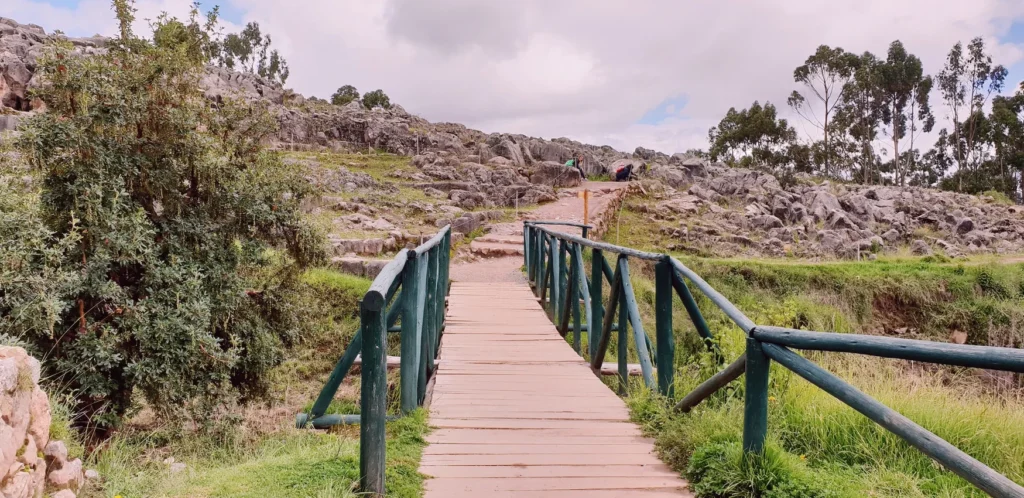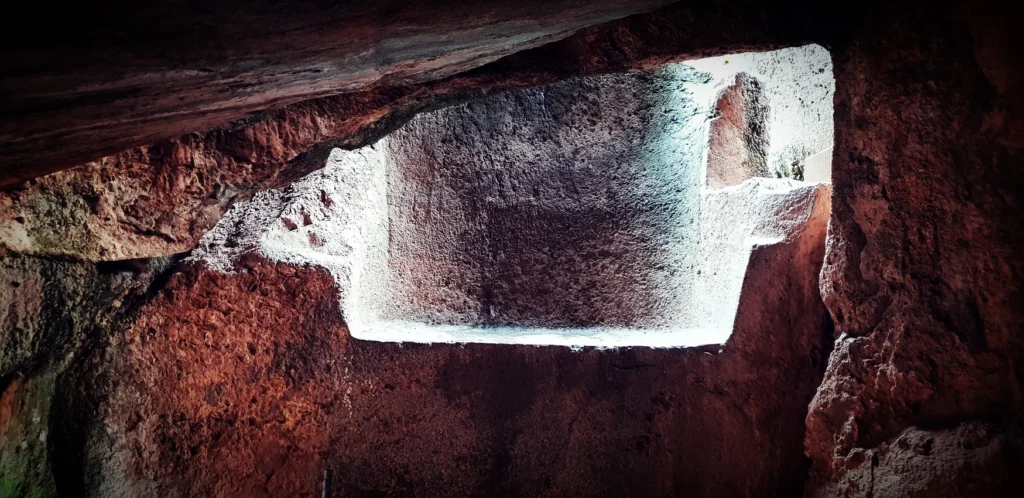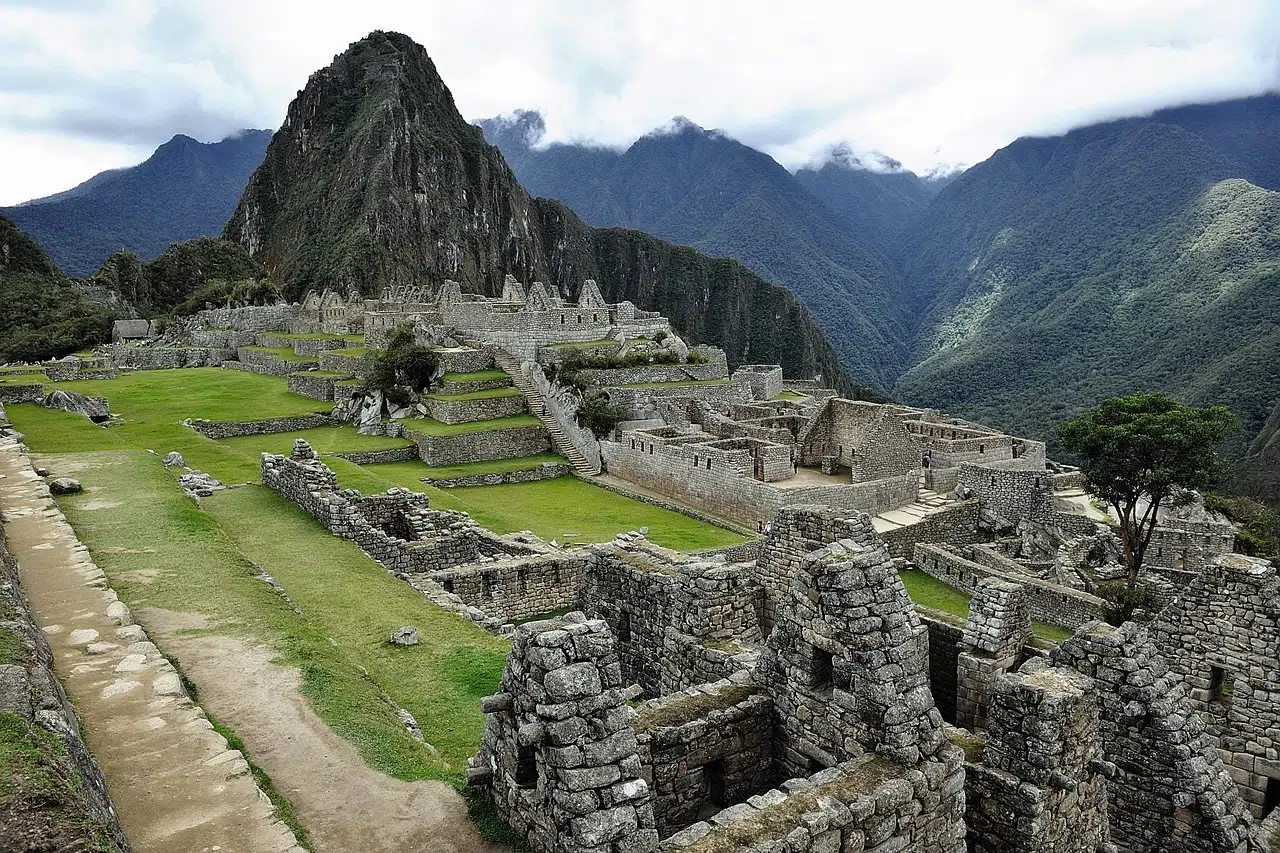Q’enqo – The Sacred Labyrinth of the Incas
Q’enqo Cusco is one of the most intriguing and mysterious Inca ruins located just outside of Cusco. Known for its underground passageways and ceremonial altars, this site offers a unique glimpse into the spiritual practices of the Incas. In this guide, we’ll uncover the history, significance, and the mysteries surrounding Q’enqo, along with practical tips on how to visit this fascinating Inca site.
Table of Contents
1. What is Q’enqo?
Q’enqo is an ancient Inca site whose name means “labyrinth” or “zigzag” in Quechua, which refers to the intricate carvings and pathways found throughout the site. Located approximately 6 kilometers (3.7 miles) from Cusco, Q’enqo was primarily a ceremonial site, where rituals and sacrifices were performed.
The site is best known for its zigzag channels, which were likely used for the ritual pouring of chicha (corn beer) or blood from animal sacrifices during religious ceremonies.
2. The History and Religious Significance of Q’enqo
The history of Q’enqo dates back to the 15th century, during the height of the Inca Empire. This site is thought to have been used for religious ceremonies and sacrificial rituals aimed at pleasing the gods. The Inca sacrifices performed at Q’enqo likely involved offerings of llamas and other animals to ensure the fertility of crops and the well-being of the people.
The religious significance of Q’enqo stems from its unique rock formations and underground altar, which many historians believe were used for funerary practices. The Incas believed that certain caves and stone structures connected the physical world to the spiritual one, making Q’enqo a sacred place for communication with the gods.
3. How to Visit Q’enqo Cusco
Q’enqo is easily accessible from Cusco, and there are several ways to visit the site:
- By Bus or Taxi: From central Cusco, it takes about 15-20 minutes by taxi to reach Q’enqo. Buses and colectivos that go to Pisac often pass by Q’enqo as well.
- Walking Tour: If you enjoy hiking, you can take a scenic walk from Cusco to Q’enqo, passing Sacsayhuamán on the way. The walk takes about 1 to 1.5 hours.
- Guided Tours: Many tours from Cusco offer visits to Q’enqo, often as part of a combined tour of nearby ruins, such as Sacsayhuamán and Tambomachay.

4. Q’enqo’s Underground Altar and Temple of the Moon
One of the most striking features of Q’enqo is its underground altar, a carved stone structure believed to have been used for sacrificial offerings and possibly mummification. This underground chamber remains one of the most mysterious elements of the site, with its cool, dark atmosphere providing a stark contrast to the exposed stone structures above.
Another feature of interest is the Temple of the Moon, a carved rock formation that is thought to have been dedicated to lunar worship. The Incas placed great importance on the moon, associating it with fertility, timekeeping, and agricultural cycles.
5. Q’enqo Entrance Fee and Cusco Tourist Ticket
Entrance to Q’enqo is included in the Cusco Tourist Ticket, which allows access to multiple archaeological sites in the region, including Sacsayhuamán, Tambomachay, and Puka Pukara. Here’s a breakdown:
- Full Tourist Ticket: Costs around 130 soles ($35 USD) and covers 16 sites, including Q’enqo.
- Partial Ticket: If you’re short on time, you can opt for the partial ticket for 70 soles ($18 USD), which includes Q’enqo and other nearby ruins.
- Validity: The full ticket is valid for , while the partial ticket is valid for 1 or 2 days, depending on the circuit you choose.
6. How Far is Q’enqo from Cusco?
Q’enqo is located about 6 kilometers (3.7 miles) from the center of Cusco, making it one of the closest Inca ruins to the city. The site is often visited as part of a half-day tour from Cusco that includes other nearby attractions like Sacsayhuamán and Tambomachay.
If you’re walking, the journey from Cusco to Q’enqo takes about 1 to 1.5 hours. It’s a relatively easy hike with scenic views, making it a great option for travelers who enjoy exploring on foot.
7. Best Time to Visit Q’enqo
The best time to visit Q’enqo is during the dry season, which runs from May to September. During this time, the weather is more predictable, with clear skies and sunny days that are perfect for exploring the ruins.
- Dry Season: May to September. Best for outdoor exploration and photography.
- Rainy Season: November to March. Expect muddy paths and occasional rain showers, but fewer tourists.
If you want to avoid the crowds, try visiting Q’enqo early in the morning or late in the afternoon.

8. Q’enqo and Nearby Ruins
Q’enqo is often combined with other nearby ruins, making it a convenient stop for those exploring the Inca archaeological circuit around Cusco. Some key nearby ruins include:
- Sacsayhuamán: Located just 2 kilometers from Q’enqo, Sacsayhuamán is one of the largest and most impressive Inca fortresses, known for its enormous stone walls.
- Tambomachay: About 4 kilometers from Q’enqo, this site features intricate water channels and is believed to have been a ceremonial bath for the Inca elite.
- Puka Pukara: Another Inca fortress, located near Tambomachay, it likely served as a military outpost to protect the surrounding area.
Visiting these ruins in one trip offers a broader perspective on Inca architecture, spirituality, and military strategies.
9. The Mystery of Q’enqo
The mystery of Q’enqo lies in its unusual design and enigmatic carvings. The zigzag channels carved into the stone are believed to have been used in rituals involving the flow of liquids—possibly chicha (corn beer) or the blood of sacrificed animals. However, the exact purpose of these channels and other aspects of Q’enqo remains a mystery to archaeologists.
Additionally, the site’s underground altar and dark passageways add to its air of mystery, as scholars continue to debate whether the space was used for funerary rituals, sacrifices, or other religious ceremonies.
10. Fascinating Facts About Q’enqo
- Zigzag Channels: The name “Q’enqo” comes from the Quechua word for “labyrinth,” referring to the zigzag channels cut into the stone.
- Sacrificial Site: It’s believed that the Incas performed animal sacrifices at Q’enqo to ensure the favor of the gods.
- Carved Stones: Some stones at Q’enqo were likely used as thrones or altars for religious leaders during important ceremonies.
- Underground Chamber: The underground altar is one of the most mysterious features of the site, adding to its aura of ancient spirituality.
Conclusion: Why Q’enqo Cusco Should Be on Your Itinerary
Q’enqo Cusco offers a fascinating glimpse into the religious and ceremonial practices of the Inca Empire. Its proximity to Cusco, along with its mysterious underground altars and intricate stone carvings, make it a must-see for anyone interested in Inca history. Whether you visit as part of a guided tour or explore the site on your own, Q’enqo will leave you with a deeper appreciation of the spiritual beliefs and sacrificial rituals that played a central role in the lives of the Incas.



